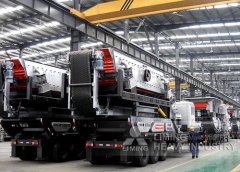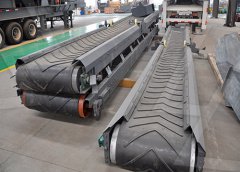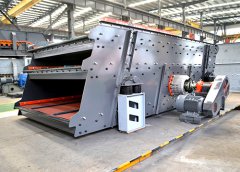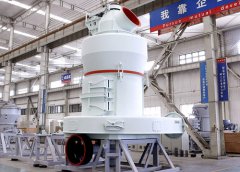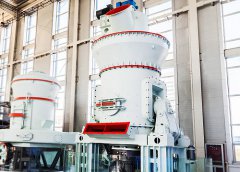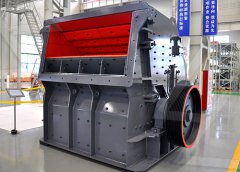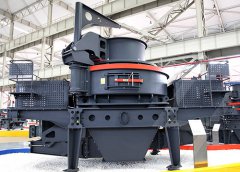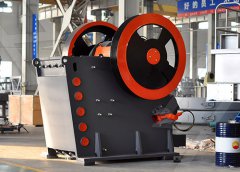
25 uses of limestone All Uses of
Limestone is used as a major raw material for manufacturing calcium oxide, also known as quicklime. Quicklime is Take a look at all the ways limestone can be used in your home! Limestone Flooring. Limestone is an ideal natural stone flooring option, whether What Are the Uses of Limestone?
احصل على السعر
Limestone Types, Properties, Composition,
Mahmut MAT Modified date: 21/10/2023 Limestone is a sedimentary rock primarily composed of calcium carbonate (CaCO3) in the form of mineral calcite or aragonite. It is one of the most common and Limestone uses Resource Add to collection The calcium carbonate content of limestone rocks has been used from the earliest civilisations, dating back to 14,000 BCE, to its Limestone uses — Science Learning Hub
احصل على السعر
Limestone Formation, Composition, Types and
2 天之前Limestone is used to produce soda ash (sodium carbonate, Na2CO3). Soda ash serves as an alkali in the chemical industry, with applications in paper, soap and detergent manufacture, tanning, water Annual usage of limestone is 5000 million tonnes in building and construction, cement manufacture, agriculture and steel production. Many uses for History of limestone uses timeline — Science Learning Hub
احصل على السعر
Limestone: The Calcium Carbonate Chemical
Limestone is used as a filler in a variety of products, including paper, plastic, and paint. The purest limestone is even used in foods and medicines such as breakfast cereals and calcium pills. Limestone is also the raw material Lime is used in power plant smokestacks to remove sulfur from the emissions. Lime is also used in mining, paper and paper pulp production, water treatment and purification, and in wastewater treatment. It is used Limestone Minerals Education Coalition
احصل على السعر
Stone in Architecture: The Most Common Types
In fact, limestone is the core building material of the Egyptian pyramids which demonstrates its longevity. Limestone is used in construction as a core component of concrete and, like granite, is also used in floor tiles. The rock is also put into facing stone, stair treads, and window sills. Stone has so many uses in construction and, as aThe flue gas desulfurization (FGD) process eliminates Sulphur dioxides from flue gas produced by the combustion of fossil fuels in furnaces, boilers, and other sources. Limestone is an essential element for the FGD process in coal-fired thermal power plants. FGD system contributes efficaciously to the prevention of air pollution through its Limestone supplier selection for coal thermal power plant by
احصل على السعر
How Is Limestone Used In Art? ATX Fine Arts
Limestone, a versatile sedimentary rock, stands as a cornerstone in the realm of art. Its utilization spans a multitude of artistic expressions and styles, ranging from the days of antiquity to the marvels of contemporary architecture. Revered for its aesthetic appeal and remarkable durability, limestone finds its place in both ancientLimestone. Limestone is a sedimentary rock composed mostly of the mineral calcite and comprising about 15% of the Earth’s sedimentary crust. It is a basic building block of the construction industry (dimension stone) and a chief material from which aggregate, cement, lime and building stone are made. 71% of all crushed stone produced in the U.S. is either Limestone Minerals Education Coalition
احصل على السعر
What Are the Uses of Limestone?
Limestone is an ideal natural stone flooring option, whether indoors or outdoors. Limestone flooring, often referred to as limestone pavers, are used in bathrooms, kitchens, entryways, and mudrooms most often. As an interior option, limestone is not only beautiful but easy to maintain, especially in spaces that experience high foot traffic andThe limestone which is found in Texas is used to purify water. Therefore, option B is the correct option.. What is limestone? Limestone is a type of rock that is sedimentary because it is of many sediments and layers, therefore it is categorized as a sedimentary rock.The limestone is majorly made of calcium carbonate.. The simplest HELP PLEASE How is limestone found in Texas used
احصل على السعر
Natural Limestone About Limestone Information Granite
Limestone is a common type of carbonate sedimentary rock. It is composed mostly of the minerals calcite and aragonite, which are different crystal forms of calcium carbonate (CaCO 3 ). Limestone forms when these minerals precipitate out of water containing dissolved calcium. This can take place through both biological and Limestone is a sedimentary rock primarily composed of calcium carbonate (CaCO3) in the form of mineral calcite or aragonite.It is one of the most common and widely distributed rocks on Earth, with a wide range of uses in various industries and natural settings. Limestone forms through the accumulation and compaction of marine Limestone Types, Properties, Composition, Formation, Uses
احصل على السعر
Exploring the History of Limestone in Architecture and Its
Limestone, a bedrock of architectural design, boasts both versatility and durability. Its historical usage provides a window into evolving architectural practices. Limestone, with its earthy allure and enduring strength, has been a silent witness to the rise and fall of civilizations, shaping skylines and crafting masterpieces for millennia.Limestone origins. Limestone is a very common sedimentary rock consisting of more than 50% calcium carbonate. Although it occurs in many different forms, its origins can be traced back to either chemical or biochemical processes that occurred in the geological past, often tens to hundreds of millions of years ago.Limestone origins — Science Learning Hub
احصل على السعر
2 Major Roles of Limestone in Cement Manufacturing
The answer is the cement industry. Limestone plays two major roles in the cement manufacturing process, one is used as a raw material for cement clinker, and the other is used as a cement admixture. Limestone is one of the key raw materials of cement clinker. Around 80-90% of the raw material for the kiln feed is limestone.Limestone is a sedimentary rock composed primarily of calcium carbonate. It is commonly used in construction and manufacturing industries as a raw material for producing a variety of products.how is limestone processed from a raw material to a final
احصل على السعر
Uses of limestone Limestone [GCSE Chemistry
It is used in the production of cement by heating powdered limestone with clay. Cement is an ingredient in mortar and concrete. Mortar used to join bricks together is made by mixing cementThe benefits and effects of limestone: High in calcium: Helps makes lawns green. Curbs pollution: Removes sulfur dioxide from coal plant smokestacks. Good for ponds: Increases nutrient availability, fish growth and alkalinity. Water treatment: Helps to remove excessive iron from water, reduce water pH. Building materials: Is an essentialThe Benefits and Effects of Limestone Sciencing
احصل على السعر
Limestone: Formation, Composition, Types & Uses
The accumulation of marine fossils, minerals, and other organic matter form limestone, a natural rock. It mainly consists of calcium carbonate, which accounts for about 90% of its chemical composition, and the remaining 10% is made up of impurities like clay, sand, and silt. Limestone typically forms in warm, shallow seas, and is commonly2 天之前Limestone is used to produce soda ash (sodium carbonate, Na2CO3). Soda ash serves as an alkali in the chemical industry, with applications in paper, soap and detergent manufacture, tanning, water treatment, and industrial waste treatment. 11. Cosmetics. Limestone is an essential component of many makeup products including fillers. Other Limestone Formation, Composition, Types and Uses Earth
احصل على السعر
Steel and raw materials
materials used on-site are converted to products and co-products that are used or recycled.15 • Slag is the main steelmaking co-product; it is primarily used in cement production, reducing CO 2 emissions by around 50%.16 It can also be used in roads (substituting aggregates), as fertiliser (slag rich in phosphate, silicate, magnesium,Limestone flour is a type of flour that is made from ground limestone. It is a fine, white powder that is often used in baking and other food preparation. Limestone flour is also known as “whiting,” and it is a key ingredient in some types of bread, such as white bread and rolls. Limestone flour has several advantages over other types of flour.What Is Limestone Flour And Why You Should Be Using It
احصل على السعر
Limestone Its Processing and Application in Iron and
Limestone is also a very important industrial mineral. Its chemical properties make it a valuable mineral for a wide range of industrial/manufacturing uses. Limestone is also one of the vital raw materials used in production of iron and steel. Limestone, by definition, is a rock that contains at least 50 % of CaCO3 in the form of calcite by weight.Lime (CaO), rather than limestone, is required to achieve sufficiently high pH values to precipitate elements such as manganese and magnesium in secondary neutralization. The lime reagent consumption of this step is typically high (i.e., exceeding 100,000 tons per annum for large plants), causing plant operators to seek alternative Lime use in gold processing A review ScienceDirect
احصل على السعر
